00:58

The spoon is an indispensable implement for eating. But what if it was permanently in your mouth? Interestingly, one bird that naturally has a distinctive black spatulate bill to search for larvae and invertebrates underwater is the spoon-billed sandpiper, the dodo of our times.
Who is the spoon-billed sandpiper?
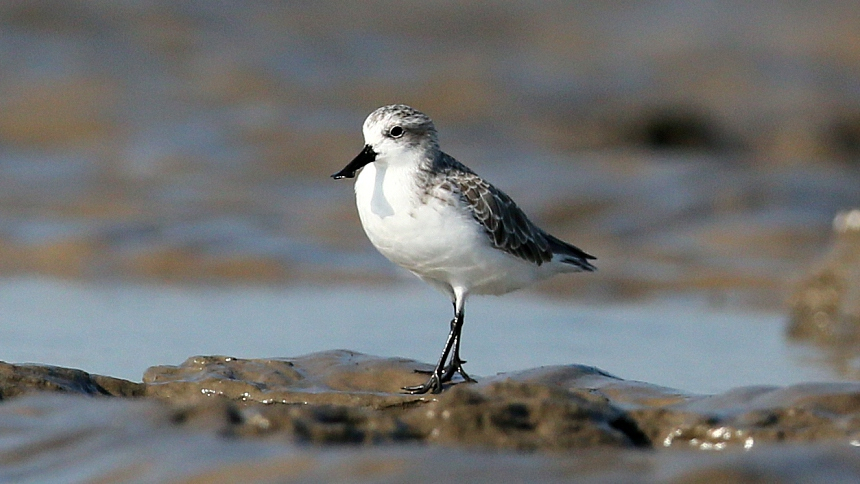
A spoon-billed sandpiper stands on the mudflat in east China's Jiangsu Province. /VCG Photo
A spoon-billed sandpiper stands on the mudflat in east China's Jiangsu Province. /VCG Photo
Every summer, the tiny spoon-billed sandpiper flies over 8,000 kilometers from northeastern Russia to its wintering grounds in Southeast Asia. The wader is very picky and only found breeding on the coastal tundra of the Chukchi Peninsula and along the isthmus of the Kamchatka Peninsula in Russia, which borders the Bering Strait.
During the breeding season, the adult spoon-billed sandpiper is dressed in a reddish brown cloak over its head, breast and back. Shortly after the young is born, the couple will depart while the chick will then migrate south on its own to find its parents.
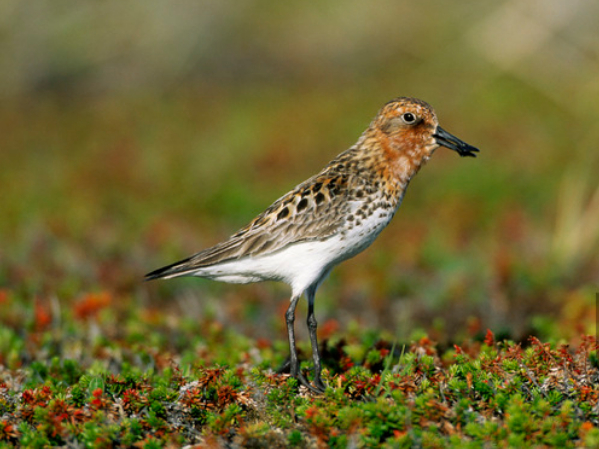
A spoon-billed sandpiper during the breeding season /VCG Photo
A spoon-billed sandpiper during the breeding season /VCG Photo
The bird travels southwest along part of the East Asian-Australasian Flyway, passing through Japan, the Korean Peninsula and China to its wintering grounds in Thailand, Vietnam, Myanmar and neighboring nations. At that time, the spoon-billed sandpiper takes off the reddish cloak and its plumage turns pale grey.
Why have the breeding pairs dropped from 1,000 to 100 in 20 years?
According to a study made by Zockler and his term, the population of the spoon-billed sandpiper declined by 88 percent between 2002 and 2009. In 2016, it was estimated that 240 to 456 mature birds were alive, with a mere 100 pairs that could breed. The species was listed as endangered in 2004 and upgraded to critically endangered by IUCN Red List four years later.
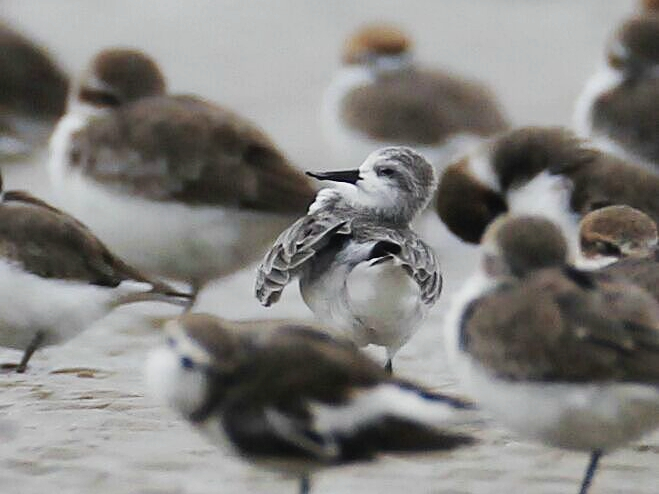
A spoon-billed sandpiper was spotted in south China's Guangxi Zhuang Autonomous Region in 2014. /VCG Photo
A spoon-billed sandpiper was spotted in south China's Guangxi Zhuang Autonomous Region in 2014. /VCG Photo
The main threat to the little creature is the habitat loss in its breeding, passage and wintering grounds due to the reclamation of tidal mudflats and erosion of mudflats. The construction of the seawall at Saemangeum in South Korea destroyed the tidal estuaries of the Mangyeung and Dongjin rivers where the birds forage and shelter.
In addition, the migrating waders are commonly hunted for food in the Bay of Martaban in Myanmar where over 50 percent of the spoon-billed sandpiper is believed to winter, according to research. They are also found trapped in Bangladesh, Thailand and China.
Can we save the bird from extinction?
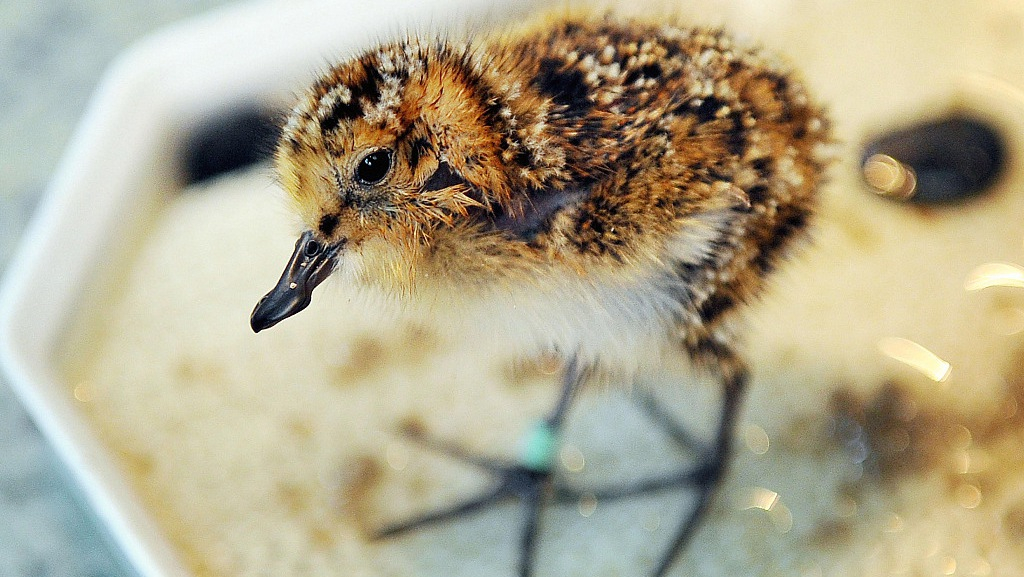
A spoon-billed sandpiper chick at the Wildfowl and Wetlands Trust (WWT) center in Slimbridge, Gloucestershire, UK. in 2012. /VCG Photo
A spoon-billed sandpiper chick at the Wildfowl and Wetlands Trust (WWT) center in Slimbridge, Gloucestershire, UK. in 2012. /VCG Photo
After discovering the dramatic population decline, a wide range of people and organizations have been working to save the spoon-billed sandpiper. Two breeding projects named "head-starting" and "Ark Population" were launched to improve the survival rate of the bird.
Both programs collect eggs from the breeding pairs in Russia and raise chicks in captivity to fledging age. The "head-starting" project releases the birds back into the wild, while the "Ark Population" project will send the chicks to Slimbridge Nature Reserve in the UK.
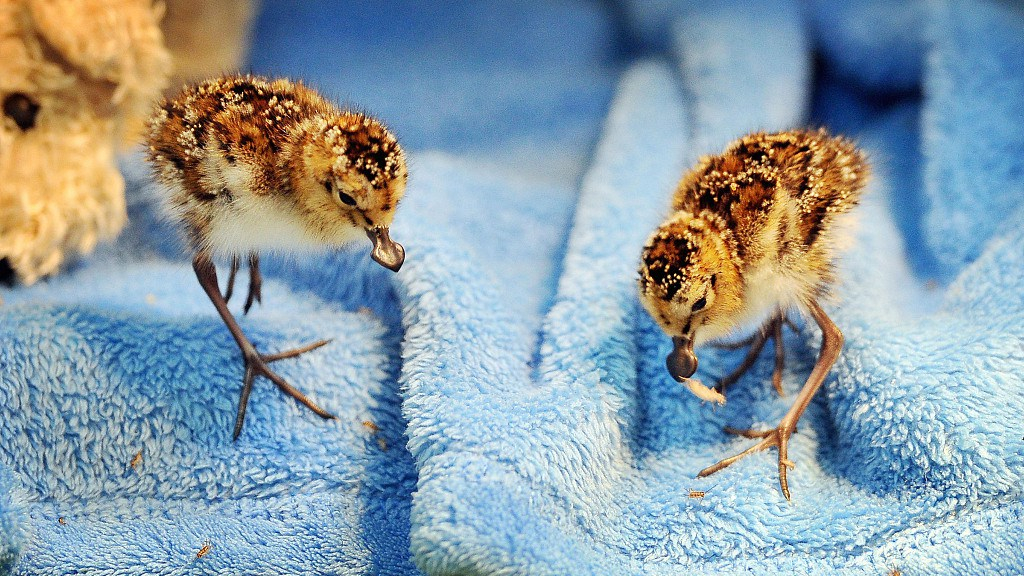
Two newborn spoon-billed sandpiper chicks feed on insects at the Wildfowl and Wetlands Trust (WWT) center in Slimbridge, Gloucestershire in 2012. /VCG Photo
Two newborn spoon-billed sandpiper chicks feed on insects at the Wildfowl and Wetlands Trust (WWT) center in Slimbridge, Gloucestershire in 2012. /VCG Photo
It is said that artificial incubation and captive breeding can result in a fivefold increase in the survival rate of the bird. In the “head-starting” project, 111 spoon-billed sandpipers have been released since the project started in 2012.
How China protects the spoon-billed sandpiper?
In spring and autumn, the spoon-billed sandpipers usually change their plumage along the coast of the East China Sea, where many other water birds stop over. In 2017, 14 sites along the coast of the Bohai Gulf and the Yellow Sea of China were nominated on the World Heritage Tentative List. The government plans to build more nature reserves in the region.

Nominated sites on the World Heritage Tentative List ... the coast of the Bohai Gulf and the Yellow Sea of China. /CGTN Infographic
Nominated sites on the World Heritage Tentative List ... the coast of the Bohai Gulf and the Yellow Sea of China. /CGTN Infographic
In 2018, the State Oceanic Administration restricted commercial development in the coastal wetlands, although China still lacks a wetlands protection law and national action plans conserving coastal wetlands.
The State Forestry and Grassland Administration has given higher priority to the spoon-billed sandpiper protection in the coastal regions in China's eastern Jiangsu Province. In 2015, the State Forestry and Grassland Administration appointed Nanjing Normal University as the core institute to cooperate with international spoon-billed sandpiper protection organizations.
The National Bird Ringing Center also grants necessary permission for bird ringing and satellite tags for the spoon-billed sandpiper and other waders. The satellite tags can track the migration route of the bird over several months, helping researchers find unknown wintering and breeding sites of the bird, and detecting illegal bird trappings and removing them.
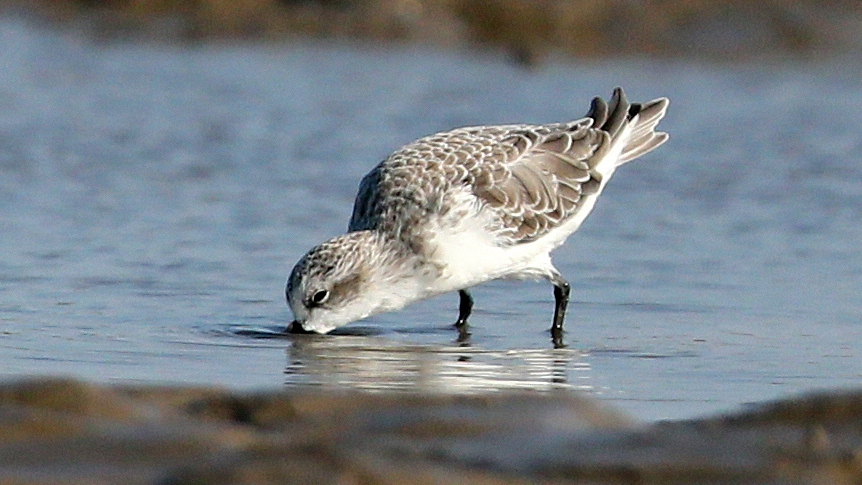
A spoon-billed sandpiper is foraging in the tidal zone in east China's Jiangsu Province. /VCG Photo
A spoon-billed sandpiper is foraging in the tidal zone in east China's Jiangsu Province. /VCG Photo
Conservationists aim to increase the population by 50 percent to 300 pairs by 2025. It's quite ambitious but worth fighting for. Don't let the spoon-billed sandpiper become another dodo.
Make It Famous
During this year's Two Sessions, a CPPCC member proposed to update the List of Wild Animals under State Priority Conservation, which has been changed only once in 30 years. Although the country has made great achievements in protecting endangered species such as the giant panda, Tibetan antelope and crested ibis in the last decades, human activities, resource utilization and climate change are contributing to the destruction of the habitats of certain animals.
In this series, we will learn some of the unfamiliar endangered animals living in China and how people and organizations in China are dedicated to protecting them.
(Cover image designed by CGTN's Liu Shaozhen.)
(If you want to contribute and have specific expertise, please contact us at nature@cgtn.com.)









